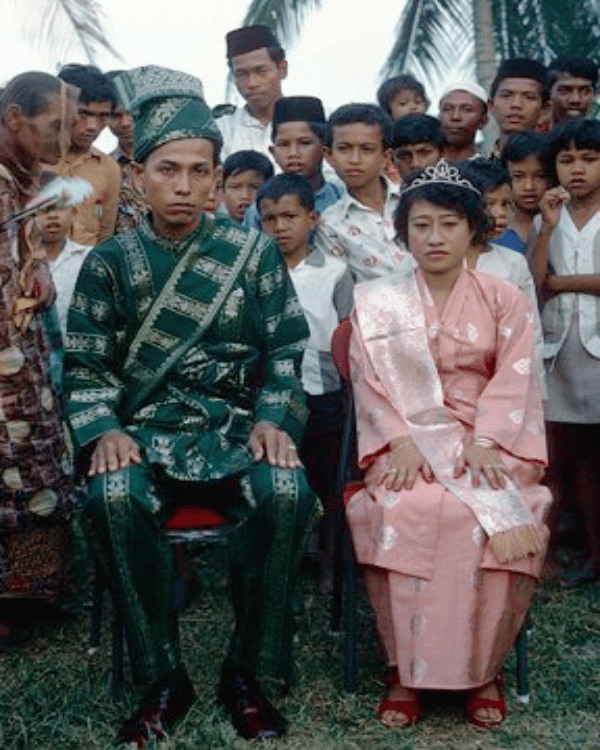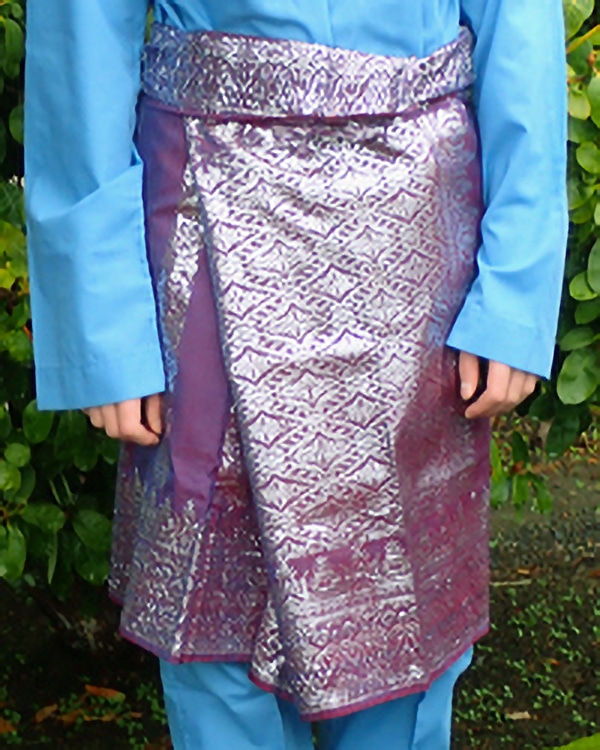I was assigned to teach Kimia dan Fizik (Chemistry and Physics) in Kedah on the northwest coast of Malaysia. The state of Kedah often is called the rice bowl of Malaysia. The great majority of my neighbors were ethnic Malays, with substantial minorities of Chinese and Indians managing shops in the region, each group adding cultural traditions to the mix that is Malaysia.
Being the “orang puteh” (white person), which made up a tiny minority there, I attracted notice wherever I went. Fellow teachers as well as other acquaintances went out of their way to include me in their lives.
I was invited to several weddings as their special guest. One of the first things done was to see if I could sit and eat like the locals. A card table size tablecloth would be spread on the ground and 4 men would sit, tailor style, while women served us. Getting my legs to fold sufficiently so I could then lean forward over the tablecloth was not easy (though I did become more adept as time went on).

Traditionally, Malaysians eat with their fingers and there is a correct way to do so. I became the entertainment for people who gathered to see how well I managed. I did well, thanks to Peace Corps training!
The Nikah or registering of a Malay marriage agreement happens at the mosque, involving the groom and the family of the bride. The public wedding celebration incorporates elements from Malaysia’s Hindu past before Islam became the religion of all Malays.
A central feature of the wedding celebration is the Bersanding (Sitting together) or Raja sehari (king for a day). The bride and groom, dressed in royal suits of songket cloth, sit on chairs together while blessings are recited and the couple is sprinkled with flower petals and rice. They are supposed to keep a very somber countenance, but friends try to sabotage them and get them to crack a smile.
Songket cloth (originally worn only by royalty) is hand-woven using silk for the body, with intricate designs woven in using silver or gold threads. These designs, and the process for weaving them correctly are held in the mind of the master weaver.
Weaving songket cloth is a very time consuming process and therefore is expensive. Now suits made with songket cloth are rented for those special occasions, such as weddings.
While in Malaysia I never had occasion to wear my baju kebangsaan (national dress) with the kain songket samping (ceremonial sarong) but I brought it home, and it reminds me of the many wedding celebrations I was fortunate to attend in Malaysia.





